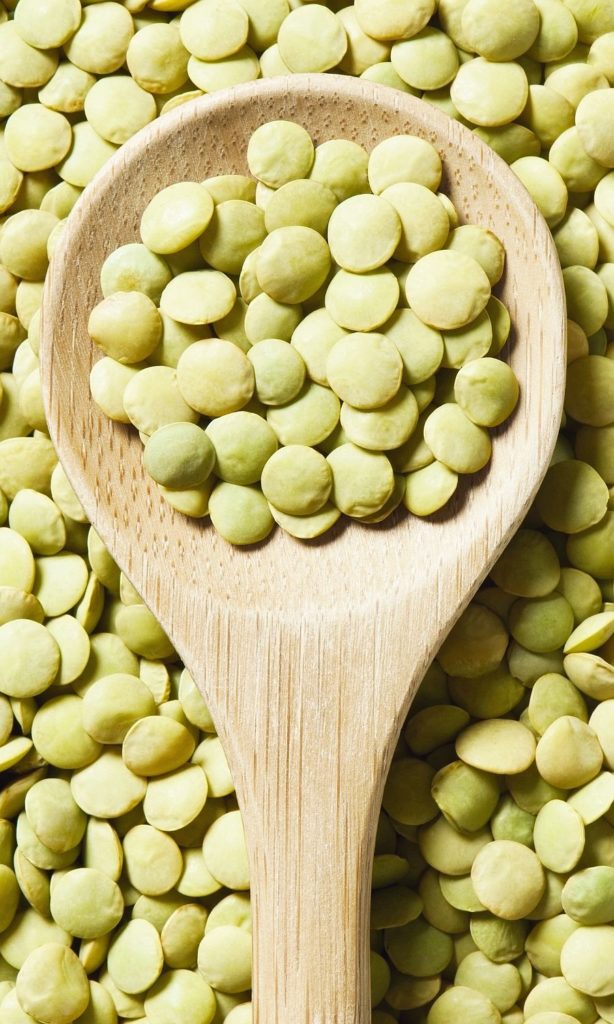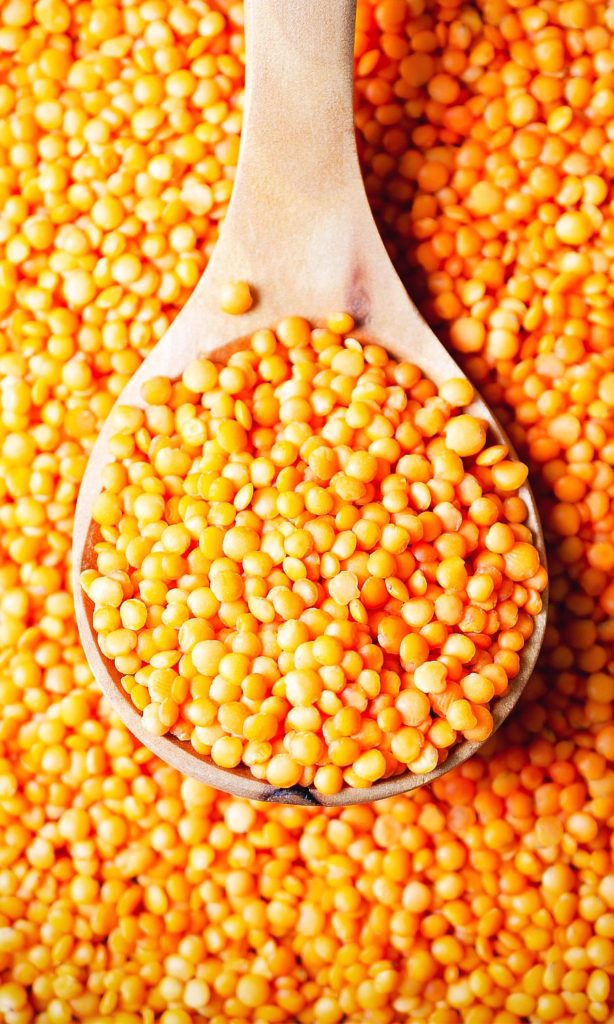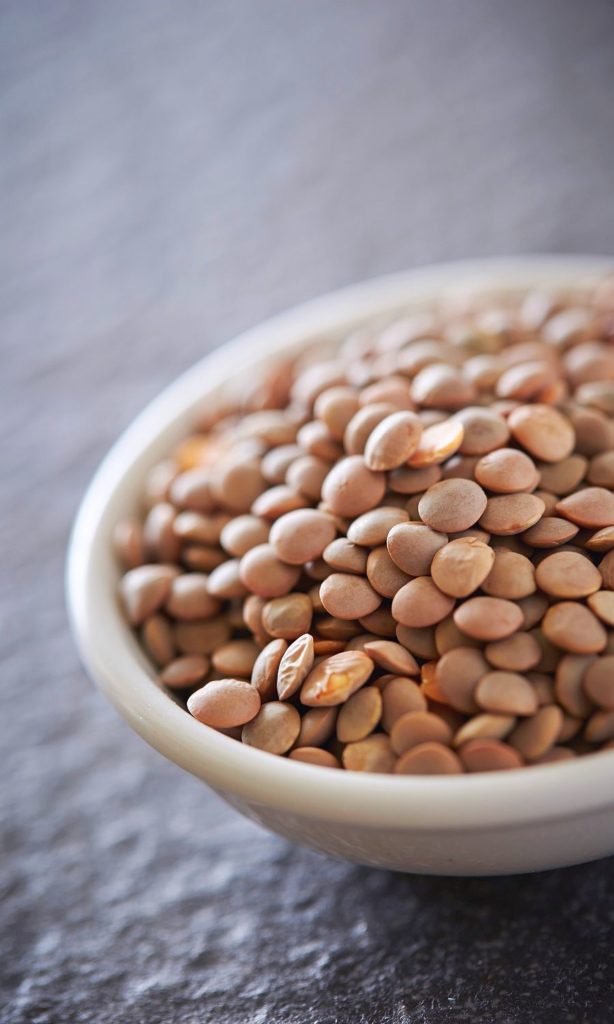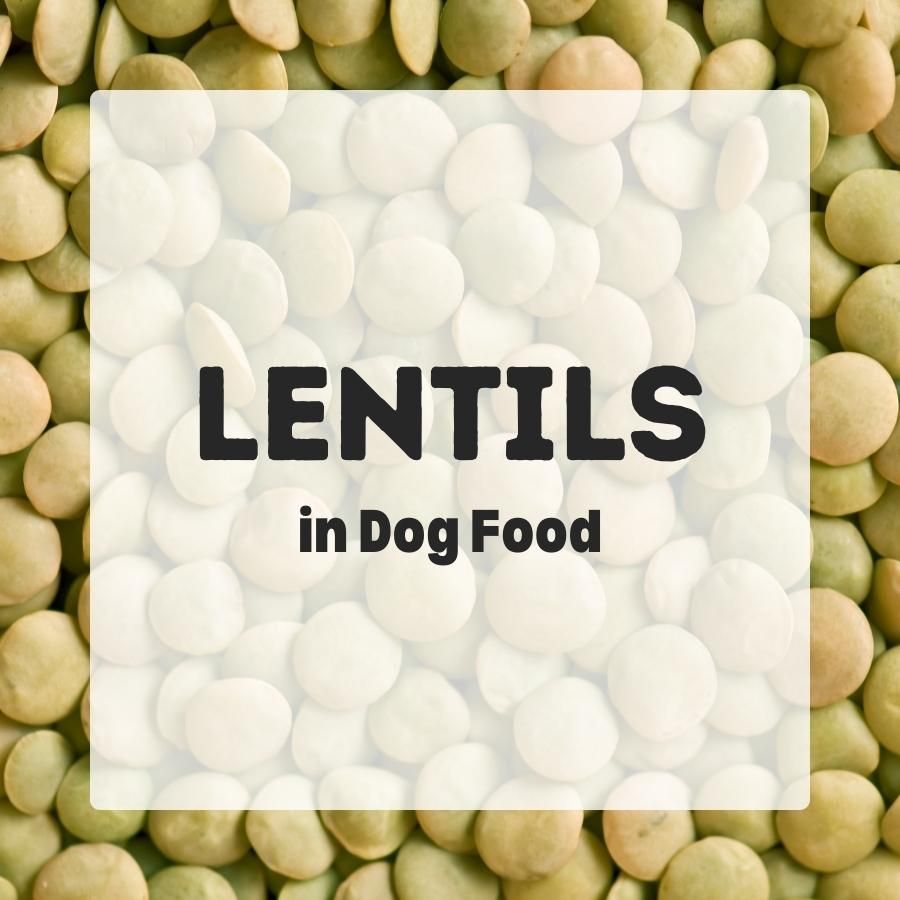In moderation, lentils for dogs are a nutritious source of protein, carbohydrates, and fiber. But lentils in dog food are a novel ingredient and not without controversy.
Contents
What are Lentils?
Lentils (Lens culinaris) are legumes with small lens-shaped seeds.
It is a very ancient crop that is now grown mainly in India and Canada. This annual plant is a staple food and important for the diet of many people in the Middle East and India.
Lentils are also used for animal feed. But only in recent years have lentils been discovered used as alternative carbohydrate or novel protein sources in commercial dog foods.

Lentil Ingredients In Dog Food
Over the past decade, lentils and other legumes have become more and more popular as an alternative carb in grain-free dog food.
Many recipes simply mention lentils in their ingredient list. These seem to be mechanically dehulled and dried lentil seeds.
Lentil seeds are a very palatable and nutrient-dense ingredient. They are especially rich in protein and starch and are a rich source of numerous essential nutrients[3,13].
Lentils contain a moderate amount of purines, if that’s important to your dog.
Lentils also contain some unsaturated fatty acids, tocopherols, and phytonutrients like lutein and zeaxanthin explaining the antioxidative properties of lentils[4].
Unfortunately, they are low in sulfur amino acids like methionine and tryptophan[1,3,12].
So amino acid supplementation or combination with other protein sources is necessary if lentils are fed to dogs.
Peas and lentils are a little less digestible compared to other carbohydrate sources like rice causing a delayed glycemic response[8].
Lentils are a good source of resistant starches. This can make them a great choice for diabetic dogs or weight management diets.
There are several lentil by-products manufacturers can use:
- Lentil flour is obtained by grinding dehulled lentils into a powder. This ingredient contains a minimum of 20% crude protein in dry matter.
- Lentil protein offers concentrated protein isolated from processed lentil seeds. It provides at least 53% crude protein in dry matter.
- Lentil starch is what’s left after lentil protein got extracted. This carb ingredient contains a minimum of 65% dietary starch in dry matter.
- Lentil fiber is a by-product of dry milling. Lentil fiber for dog food has to offer at least 23% crude fiber in its dry matter.
There are many different lentil cultivars.

If you choose green lentils for dogs or red lentils for dogs only makes a small difference. Traditionally, red lentils are dehulled and sometimes split making them easier to cook.
And like other legumes, lentils need to be cooked to make them edible for dogs. Of course, this is done anyway with processed dog food, but must be considered for homemade diets.
That’s because raw lentils contain moderate amounts of so-called anti-nutritional factors like enzyme inhibitors, tannins, lectins, phytic acid, and saponins[1].
Are Lentils Good For Dogs?
Peas and lentils for dogs are currently considered somewhat controversial ingredients.
Lentils were among the ingredients the initial FDA statement reported in 2018 as ingredients of concern potentially linked to canine DCM[5].
As of 2019, over 90% of DCM-associated diets contained peas or lentils. And a 2021 study found peas and lentils in dog food to add biochemical compounds possibly linked to DCM[11].
But we still don’t know what exactly causes diet-related heart problems in some dogs. In moderation, lentils still seem to be nutritious and not harmful to the majority of dogs.
But there are some manufacturers that include excessive amounts of legumes in their recipes. Sure it’s tempting, lentils are in fact way cheaper compared to other sources of protein and energy.

The use of novel ingredients like lentils may indeed change the bioavailability or metabolism of some nutrients without us realizing yet. Especially if lentils are one of the main ingredients.
And we don’t know all that much about the long-term effects of lentil-inclusive diets either. Studies focussing on lentils for dogs so far are only a few and a little inconclusive.
Legume-inclusive diets can be somewhat high in dietary fiber. And too much fiber may be bad for taurine intake…[9].
Dogs fed a grain-free legume-rich pea & lentil diet for four weeks experienced a progressive increase in plasma phosphate, a decrease in red blood cells, and changes in taurine metabolism[6].
But in another study, the inclusion of green lentils did not have any negative effects on health or taurine status over a 90-day period.
However, it caused higher concentrations of bile acids. The study concluded that the relationship between microflora, bile acid metabolism, and taurine status needs further investigation[7].
Are lentils safe for dogs? Are lentils bad for dogs?
Lentils are a relatively new ingredient in dog food we don’t seem to completely understand. Or as one study neatly puts it: “Pet food marketing has outpaced the science.”[10].
Most people feed the same food every day.
In general, we recommend avoiding all static diets that contain excessive amounts of one ingredient or completely exclude one ingredient for no good reason.
In this case, although we don’t want to give lentils a bad name, we recommend avoiding diets that include lentils as one of their top ingredients and consulting your veterinarian when in doubt.
Further Reading
[1] FAO 2017. Pulses and their by-products as animal feed (PDF). Chapter 10: Lentils.
[2] AAFCO Official Publication. Chapter 6. Free Access.
[3] Feedipedia: Lentil (Lens culinaris). 2015
[4] Bing Zhang et al. Fatty acid, carotenoid and tocopherol compositions of 20 Canadian lentil cultivars and synergistic contribution to antioxidant activities. Food Chemistry. 2014. https://doi.org/10.1016/j.foodchem.2014.04.014
[5] Ontiveros et al. Development of plasma and whole blood taurine reference ranges and identification of dietary features associated with taurine deficiency and dilated cardiomyopathy in golden retrievers: A prospective, observational study. PLoS ONE. 2020. https://doi.org/10.1371/journal.pone.0233206
[6] Bakke et al. Responses in randomised groups of healthy, adult Labrador retrievers fed grain-free diets with high legume inclusion for 30 days display commonalities with dogs with suspected dilated cardiomyopathy. BMC Vet Res. 2022. https://doi.org/10.1186/s12917-022-03264-x
[7] Reilly et al. Longitudinal assessment of taurine and amino acid concentrations in dogs fed a green lentil diet. Journal of Animal Science. 2021. https://doi.org/10.1093/jas/skab315
[8] Carciofi et al. Effects of six carbohydrate sources on dog diet digestibility and post-prandial glucose and insulin response. Journal of Animal Physiology and Animal Nutrition. 2008. https://doi.org/10.1111/j.1439-0396.2007.00794.x
[9] Mansilla et al. Special topic: The association between pulse ingredients and canine dilated cardiomyopathy: addressing the knowledge gaps before establishing causation. Journal of Animal Science. 2019. https://doi.org/10.1093/jas/sky488
[10] Freeman et al. Diet-associated dilated cardiomyopathy in dogs: what do we know? Journal of the American Veterinary Medical Association. 2018. https://doi.org/10.2460/javma.253.11.1390
[11] Smith et al. Investigation of diets associated with dilated cardiomyopathy in dogs using foodomics analysis. Sci Rep. 2021. https://doi.org/10.1038/s41598-021-94464-2
[12] Reilly et al. Macronutrient composition, true metabolizable energy and amino acid digestibility, and indispensable amino acid scoring of pulse ingredients for use in canine and feline diets. Journal of Animal Science. 2020. https://doi.org/10.1093/jas/skaa149
[13] Traughber et al. Chemical Composition and In Vitro Fermentation Characteristics of Legumes Using Canine Fecal Inoculum. Journal of Animal Science. 2020. https://doi.org/10.1093/jas/skaa278.572
